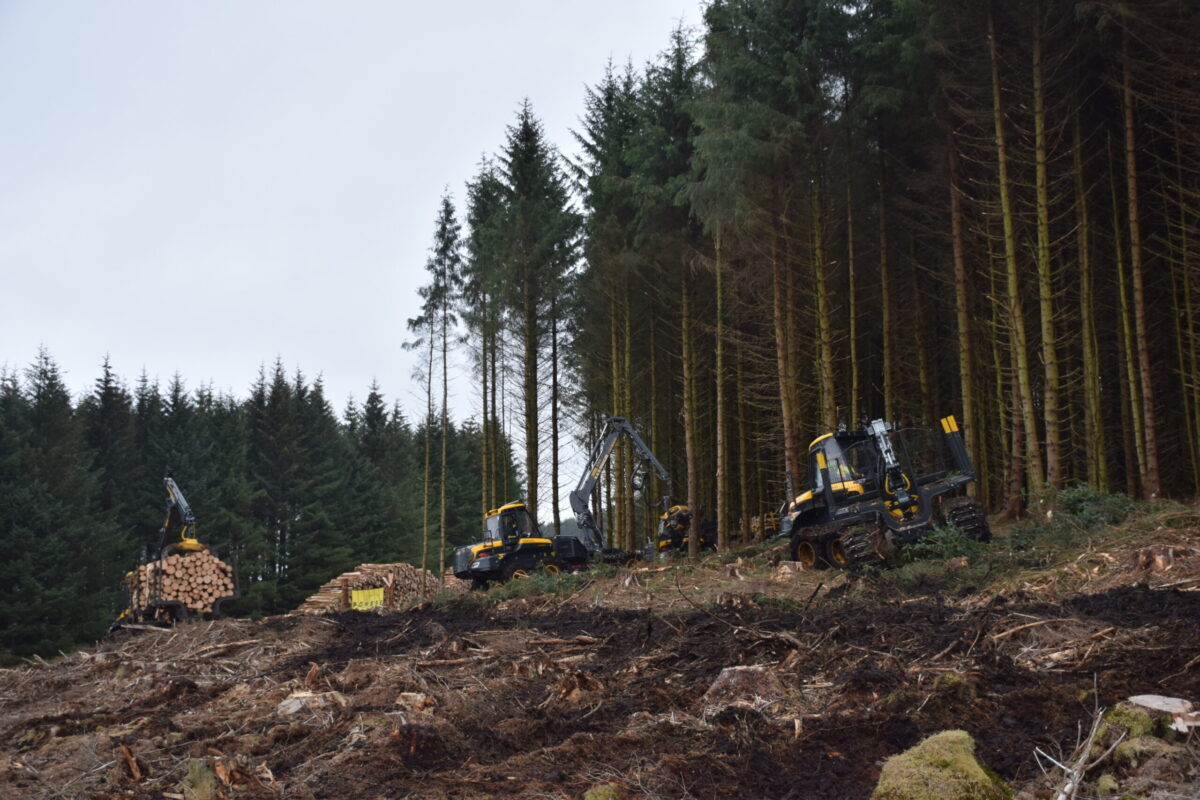33 million people are employed in forestry throughout the world
Quantifying how many people are employed in the forestry sector is not a straightforward exercise. Nonetheless, the ILO, FAO and the Thünen-Institute of Forestry joined forces to estimate the global workforce in forest-related activities and provide insights on labour market trends in this sector.
Forests and the Forestry sector are an important source of employment, livelihoods and incomes for millions, especially in rural areas. Forests currently cover 31% of the global land area, although they are not equally distributed around the globe.
More than half of the world’s forests are found in only five countries (the Russian Federation, Brazil, Canada, the United States of America and China) and two-thirds (66%) of forests are found in 10 countries.
These 10 countries employed an estimated annual average of 18.6 million workers in forest related activities between 2017 and 2019.
Worldwide, the Forestry sector employed an estimated 33 million persons, or 1% of global employment. Although Asia accounted for just 15% of the world’s forest areas, almost two-thirds of global forest sector workers were in this region.
The Forestry sector includes agricultural activities, namely forestry and logging, but most activities are in manufacturing. More than half of the sector’s employment (58%) is in the manufacture of wood and products of wood, with another 18% in pulp and paper manufacture.
The current global employment figure represents an overall decline of 15% when compared with the 39.5 million persons employed in forest-related activities between 2011 and 2013. This change is most visible in the Americas and Asia.
Meanwhile, the number of Forestry workers increased in Africa and remained essentially unchanged in Europe and Oceania. The overall decline is partly explained by the increased levels of mechanization and consequent labour productivity gains.
Women are significantly under-represented in the forest sector. They comprised less than a quarter of total employment in forest-related activities between 2017 and 2019, according to estimates using data from 69 countries. This figure may be explained in part by the nature of forest sector work. Tasks in logging and wood-based industries typically require intensive physical labour, which can hinder female participation.
Rather, female workers tend to perform less physical tasks, such as silvicultural work and administrative duties. Women also engage ingathering non-wood forest products or producing charcoal, which often are viewed as household chores or subsistence activities and thus do not get captured as employment in the statistics.
Informal employment accounts for a significant proportion of forest-related employment especially in lower income countries. Estimates based on 56 countries with available data show that 77% of forest-related employment was informal between 2017 and 2019.
In Africa and Asia, this estimate surpasses 80% of the total forest-related employment, 10 percentage points above the informal employment rate in all economic activities.
Work in the forest sector is characterized by high degrees of informality and seasonality and it is often reported as a secondary or tertiary job. This makes it more challenging to capture the full extent of the forest-related workforce, in addition to other methodological challenges caused by the data availability, units of measurement and country coverage.
Enhancing the availability of reliable and comparable forest-related employment statistics on national and global scales is necessary for enabling more evidence-based policy advice and response strategies. It is a key dimension towards a sustainable and resilient future in the forest sector.
The ILO and FAO have joined forces to collaborate on advancing these efforts for improving forest-related employment data. The collaboration is centred on the Collaborative Partnership on Forest (CPF) initiative to provide a harmonized methodological approach for the employment-related indicator of the Global Core Set of Forest-related Indicators.
The work is also responding to the conclusions of the ILO sectoral meeting on promoting decent work and safety and health in forestry, on data collection and on strengthened partnerships.
-
That’s a remarkable amount of work hours for a single machine, the Norcar 600 owned by Erkki Rinne is taken well care of, it even has the original Diesel engine.
-
Kieran Anders is a forestry contractor working in the lake district. His work involves hand cutting and extracting timber using a skidder and tractor-trailer forwarder.
-
It is not possible to eliminate chain shot, but there are simple steps that can be taken to reduce the risk.
-
Arwel takes great pride in the fact that the mill has no waste whatsoever, “the peelings are used for children’s playgrounds, gardens and for farm animals in barns in the winter and the sawdust has multiple uses in gardens and farms as well.
-
Timber hauliers need to encourage young blood in, and also look after the hauliers we have, we need make the sector a safe and positive place to work.
FIND US ON
Related Posts
Forest Machine Magazine is written and edited by a forest professional with over 40 years hands on experience. We are dedicated to keeping you informed with all the latest news, views and reviews from our industry.
To support us you can subscribe to our bi-monthly magazine which is delivered to your door from only £30 per year.
Subscribe here
#homeoflogging #writtenbyloggersforloggers #loggingallovertheworld
-

 1 Year Subscription£0.00
1 Year Subscription£0.00 -

 2 Year Subscription£0.00
2 Year Subscription£0.00 -

 Issue 37£6.00
Issue 37£6.00 -

 Sustainable Logging: Powering The Planet T-Shirt£17.50 – £20.00
Sustainable Logging: Powering The Planet T-Shirt£17.50 – £20.00 -

 Sustainable Logging: Powering The Planet Hoodie£33.00 – £36.00
Sustainable Logging: Powering The Planet Hoodie£33.00 – £36.00

